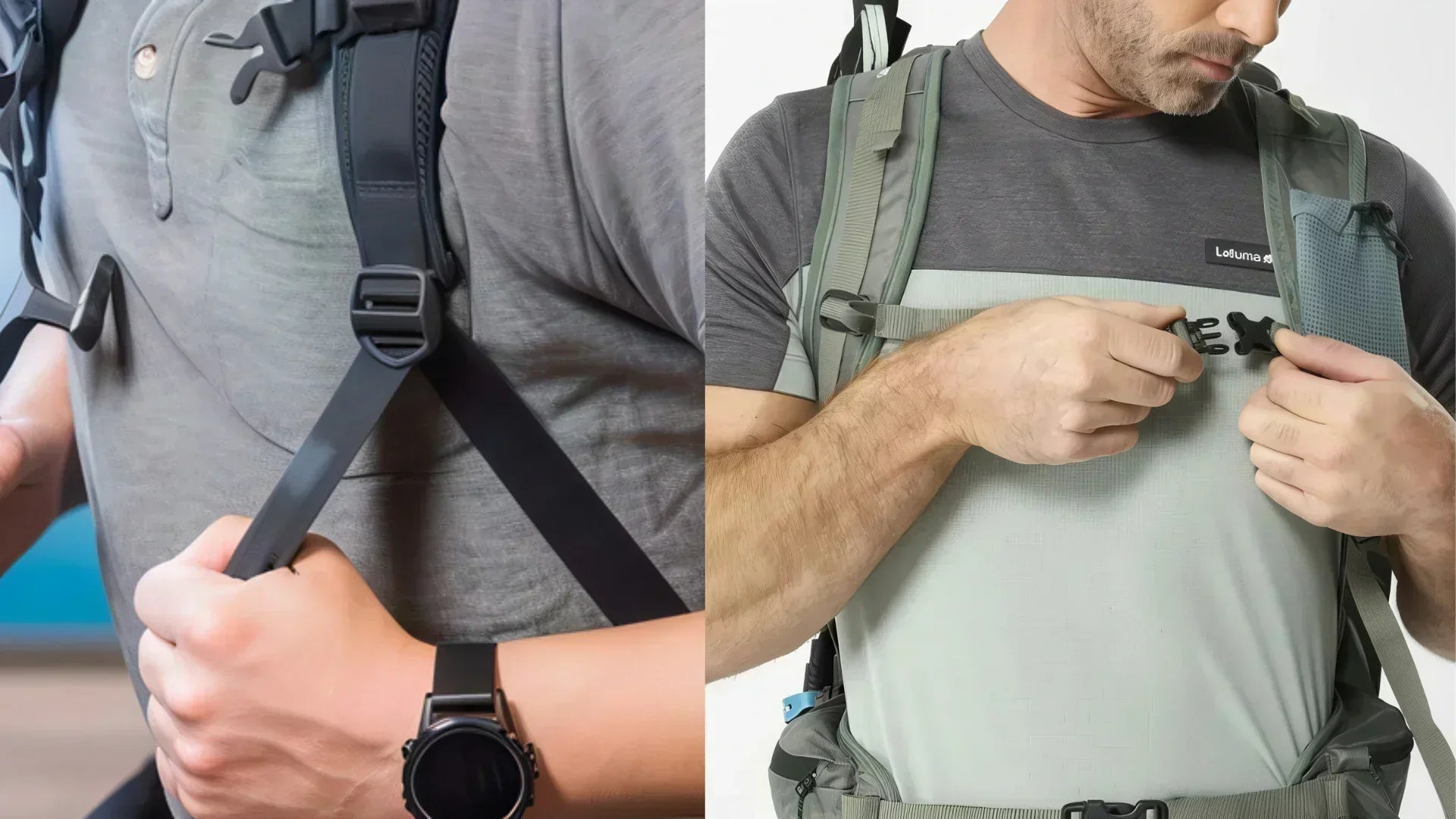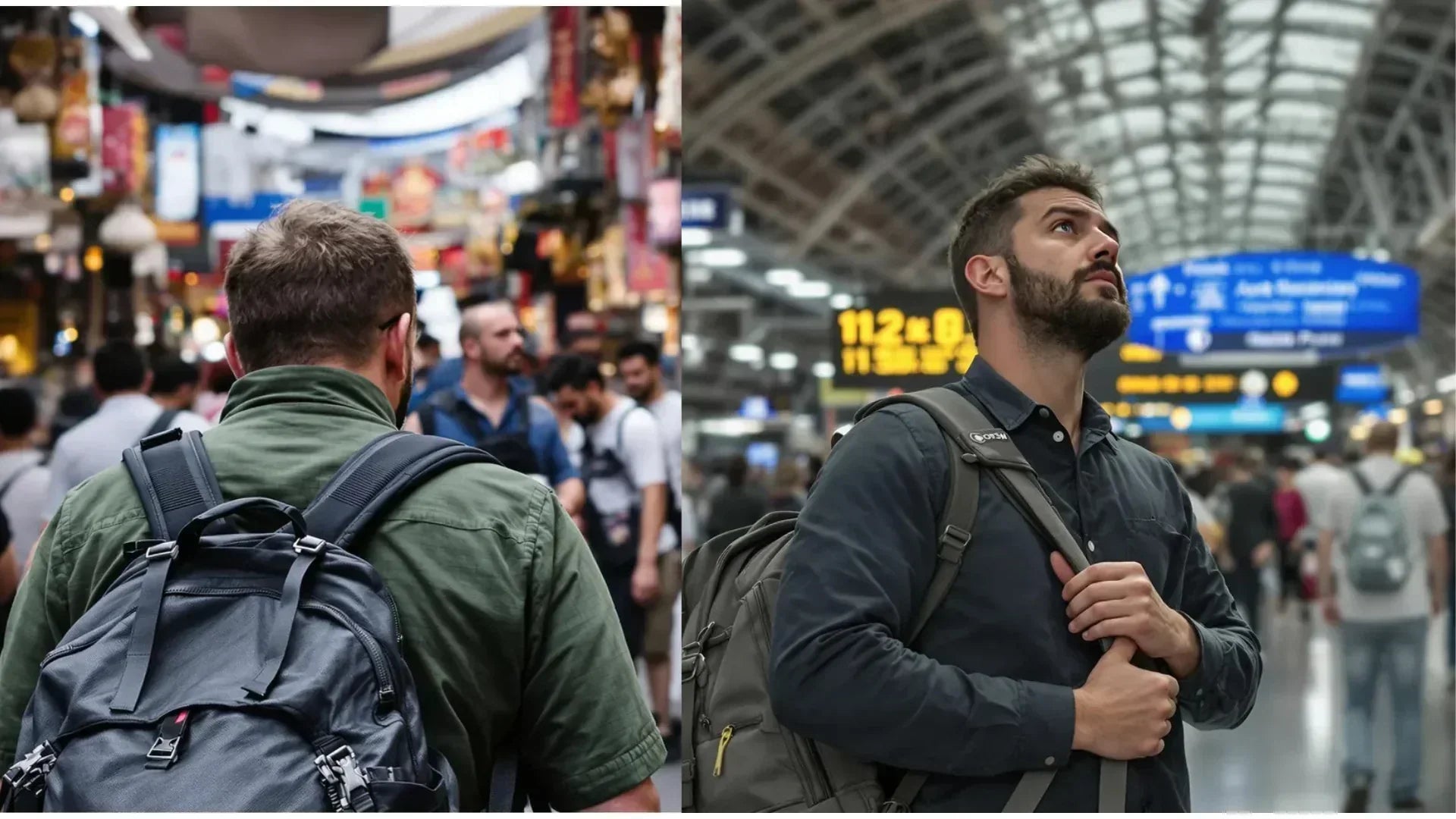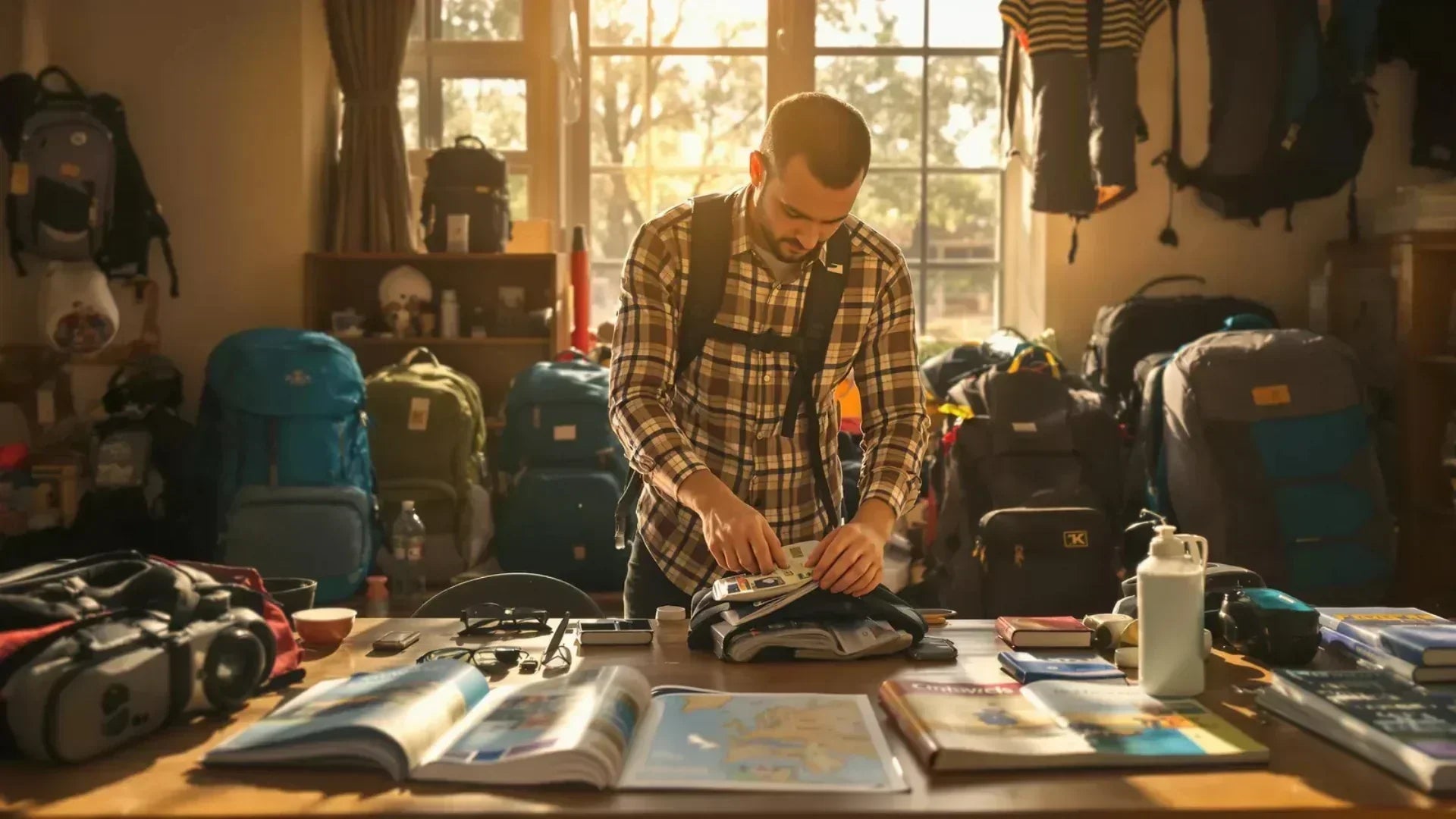
What size travel backpack should I choose?
Choosing the right size travel backpack can be a real headache: too small, and you won't have enough space; too big, and you'll be carrying unnecessary weight. Discover how to adapt the volume to the length of your trip, the type of belongings you're packing, and restrictions like carry-on luggage. With our practical advice on the ideal size, weight, and compartment organization, find the perfect balance between comfort and functionality, whether you're planning a weekend getaway or a round-the-world trip.
Summary
- Understanding the different backpack sizes for travel
- Choose the size of your backpack according to the length of your trip
- Ideal size depending on the type of trip and traveler
- Optimize space and choose a bag suited to your needs
Understanding the different backpack sizes for travel
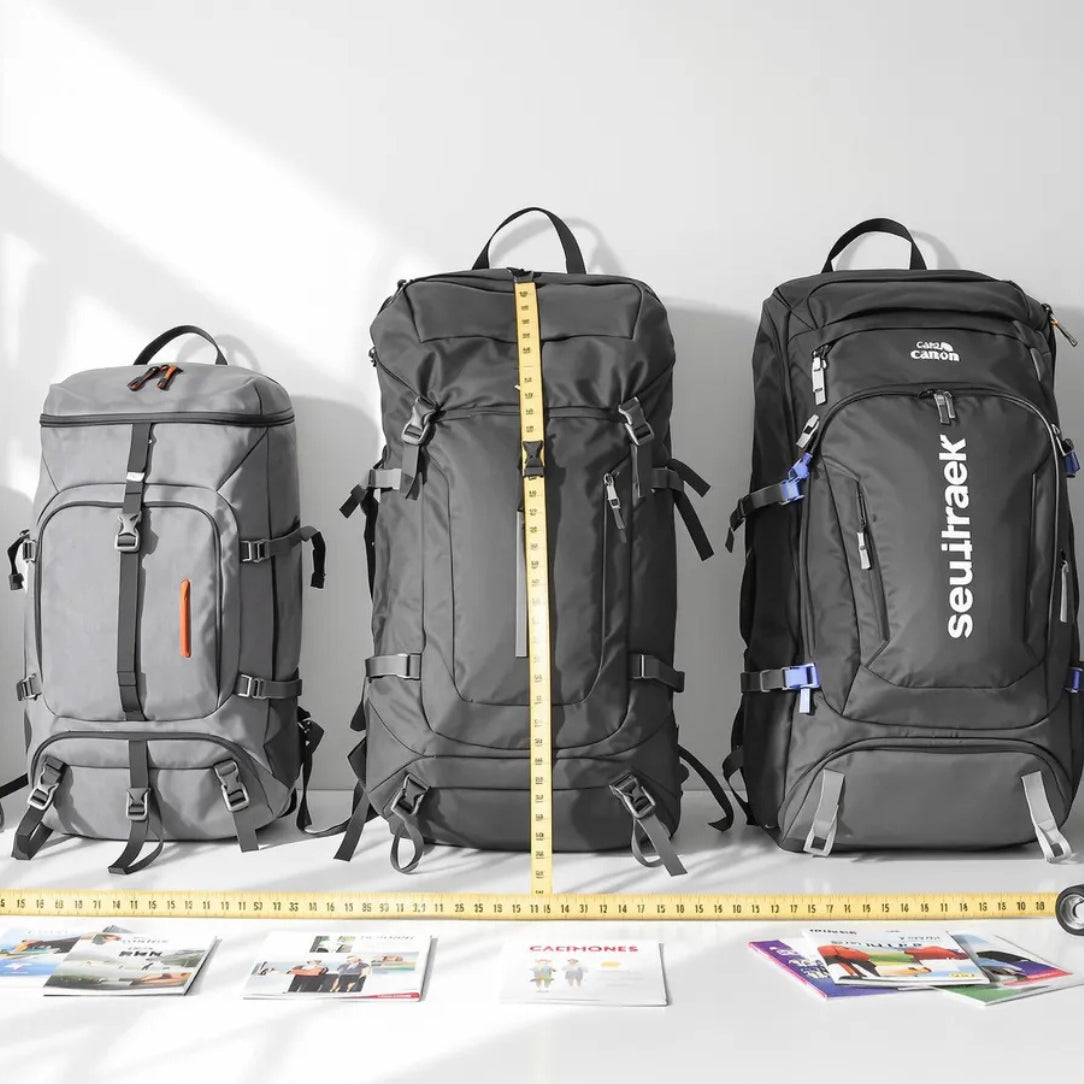
The basics of the volume of a travel backpack
The volume of a travel backpack, expressed in liters, determines its storage capacity. This criterion directly influences the amount of belongings that can be carried and the comfort during travel. Manufacturers classify backpacks according to standard ranges. These categories range from 15-35L for short trips to 60L and more for longer stays. Each range meets specific needs in terms of mobility and independence.
The advantages and disadvantages of different volumes
A small 15-35L bag offers lightness and maneuverability. It's perfectly suited for air travel without being bulky. Its compact size encourages traveling light. However, this format limits the amount of gear you can carry. 40-55L bags balance capacity and convenience for trips of 1 to 2 weeks. 60L and larger models are suitable for trips requiring specialized equipment.
The impact of weight on volume selection
The weight of the bag directly influences carrying comfort. The larger the volume, the greater the weight to be carried, requiring reinforced straps for good balance.
| Volume (litres) | Estimated average weight (kg) | Examples of models |
|---|---|---|
| 20-35L | 0.8 to 1.5 kg | Lightweight urban models |
| 40-55L | 1.5 to 2.2 kg | Multipurpose bags |
| 60-75L | 2.2 to 3.5 kg | Trekking bags |
| 80L+ | 3.5 kg+ | Large formats for long stays |
For comfortable carrying, choose a bag with a volume suited to your body type. A loaded bag should not exceed 15-20% of your body weight. Opt for an ergonomic model with padded shoulder straps and waist belt.
The importance of the opening and the compartments
The front opening provides full access to the contents, like a suitcase. The top opening remains convenient for quickly retrieving items from above. Interior compartments and exterior pockets optimize organization. A dedicated laptop compartment protects the device. Side pockets hold water bottles or accessories. Good organization maximizes the actual capacity of a backpack.
Choose the size of your backpack according to the length of your trip

Recommended volumes for short stays (1-3 days)
Short trips of 1 to 3 days are best suited to volumes between 20 and 40 liters. This size offers a good balance of lightness and capacity, ideal for a weekend getaway or a short business trip.
- 3 pairs of underwear and 3 pairs of socks for a weekend
- 1 nightgown and 1 or 2 bottoms (trousers, skirt, etc.) depending on the season
- 3 versatile tops (T-shirts, shirts, tank tops)
- 1 light evening outfit and 1 sporty outfit if necessary
- Use luggage organizers to compartmentalize belongings
- Roll up clothes to reduce their bulk
- Choose travel-sized toiletries for the cabin
- Opt for an ultra-compact microfiber towel
- A foldable backpack for occasional trips
- A reusable water bottle to avoid unnecessary purchases
- A sleep mask and earplugs for comfort
- A lightweight external battery for recharging devices
Choose a 20-30L bag for a light weekend getaway. Compact models are ideal for getting around town and traveling by plane. For a 3-day trip, a 35-40L bag offers more space without being overpacked.
Volumes suitable for medium-length trips (4-10 days)
Trips of 4 to 10 days require between 40 and 60 liters to carry the essentials without overloading. This volume is suitable for various types of travel, whether urban or in nature. Osprey and Deuter offer renowned models for these durations. The Osprey Farpoint 40L impresses with its lightness and organization, while the Deuter Aviant Access Pro 65L SL is better suited to trips requiring extra gear. Discover models designed to combine comfort and practicality on Backpacks for Travel.
Ideal size depending on the type of trip and traveler
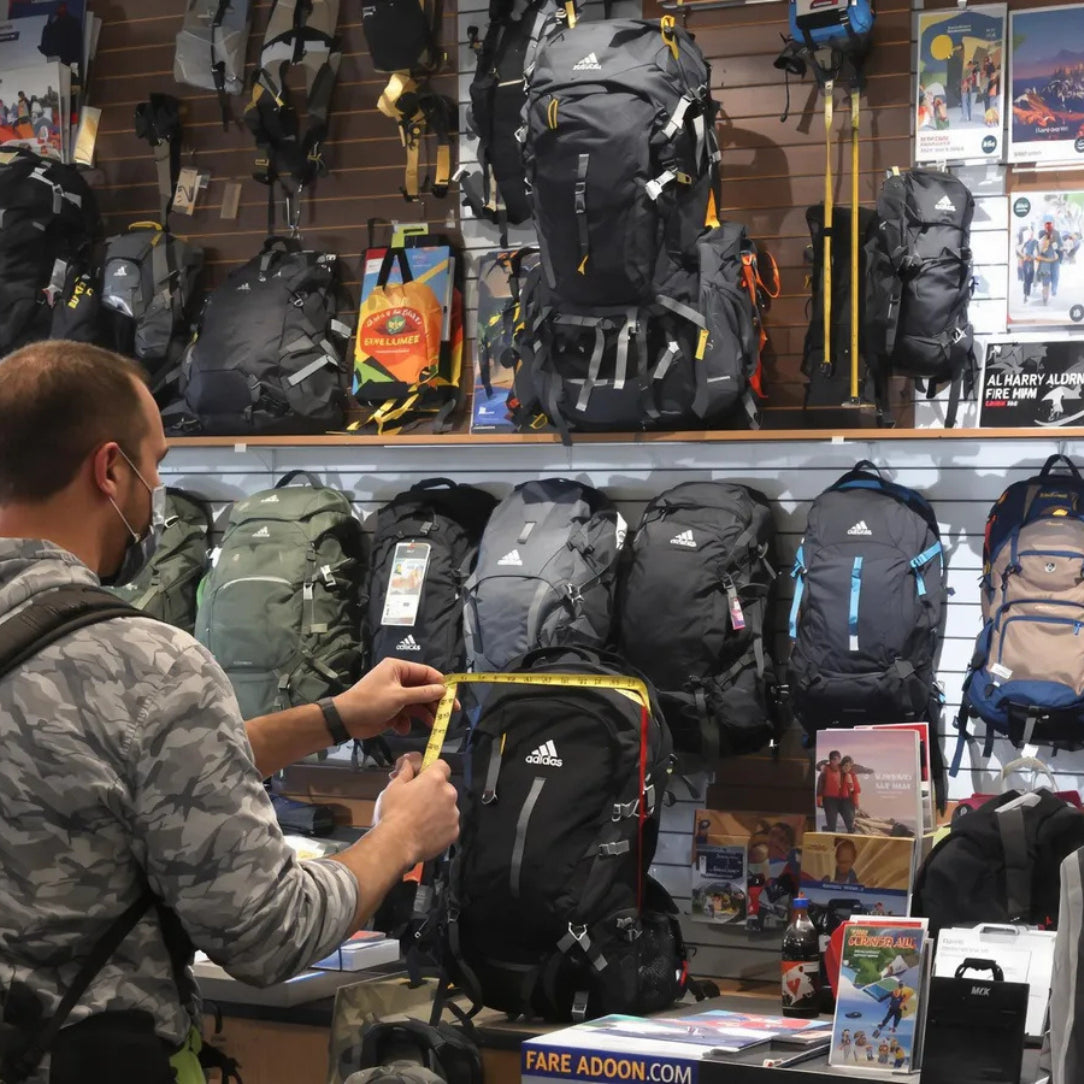
Backpack suitable for air travel and compliant with cabin baggage regulations
Airline restrictions limit the volume of carry-on luggage allowed. Generally, dimensions must not exceed 55 x 35 x 25 cm. A volume between 35 and 40 liters is suitable within these limits. The cabin baggage format prioritizes practicality with a front opening and compression straps. These features facilitate packing in overhead compartments and allow quick access to the contents. Models with external pockets optimize organization without increasing the internal volume.
Volume for trekking and hiking vs. urban travel
Trekking requires more gear and a generous volume, often 50-70L. The urban traveler, on the other hand, prioritizes mobility with a 20-40L bag containing essential clothing and accessories. A lightweight bag is suitable for city walks, while a reinforced model is necessary for hiking. External attachment straps and waterproof reinforcements become indispensable in the wilderness. In the city, a laptop compartment and quick-release pockets are sufficient for organizing daily life.
Adjusting the volume to meet the needs of women and men
Men's and women's body shapes influence the choice of a suitable backpack. Women's models incorporate ergonomic straps and a frame for balanced carrying. Specific ranges like the Deuter Women's collection or Osprey bags designed for women's bodies offer ideal comfort. Men's models accommodate larger sizes with longer straps and back panels. Both genders benefit from similar volumes, but with different ergonomic adjustments.
Volume for the minimalist traveler vs. the one who wants comfort
Minimalism encourages traveling light with a 15-35L bag containing only the essentials. This approach simplifies travel and reduces carrying burdens. Those seeking more comfort can opt for a 45-70L bag. This extra volume accommodates additional clothing, electronic devices, and wellness accessories. Proper packing avoids unnecessary bulk while facilitating organization.
Optimize space and choose a bag suited to your needs
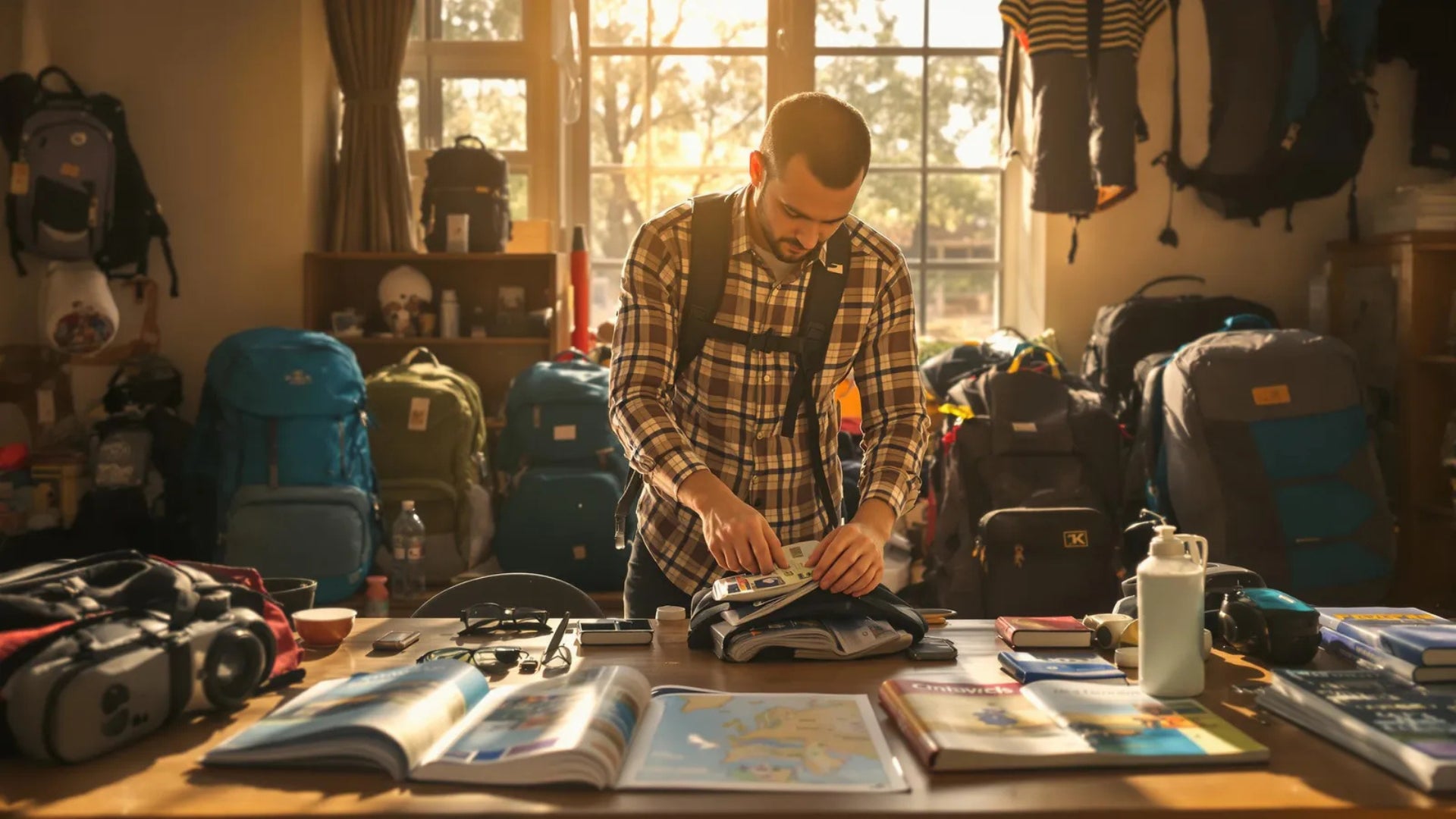
Storage strategies for optimal volume
The internal organization of a backpack maximizes its apparent capacity. Adjustable dividers and external compartments facilitate access without cluttering the space. Storage cubes and waterproof covers organize belongings, optimizing every nook and cranny. Accessories like compression bags and external straps simplify managing a large volume. By attaching bulky items to the outside, you preserve internal space for essentials. Elastic side pockets accommodate water bottles or umbrellas without taking up too much room.
Adjusting the volume according to the seasons
The seasons directly influence the clothing you pack. A winter trip requires more layers, necessitating more space than a light summer one. A 40L bag is sufficient for summer with light clothing and minimal gear. In winter, opt for 50-60L to accommodate thick sweaters, waterproof suits, and appropriate footwear. Accessories like gloves and hats take up a significant amount of space in a compact bag.
Accessories that facilitate volume optimization
Compression bags reduce the bulk of loose clothing. External waterproof pockets hold toiletries without the risk of leaks. Accessories like a foldable bag or power strips save space. Clothes rolled up in storage bags prevent clutter. Compression straps adjust the volume according to the contents, keeping the bag compact even when half full.
How to test the comfort of a bag before buying it
Fill the bag with items similar to those you'll be taking on the trip. Wear it to assess the ergonomics and support of the straps. Check that the back panel remains ventilated and the shoulder straps are evenly distributed. Adjust the straps for a personalized fit. Walk around for a few minutes to test the stability. Models with a ventilated back panel and ergonomic reinforcements offer optimal comfort. For a long trip, choose versions with an adjustable carrying system and side reinforcements.
The ideal size for your travel backpack depends on the length of your trip, your planned activities, and your body type. Making an informed choice guarantees comfort and organization . By combining practicality and lightness, your next trip will be worry-free: well-equipped, every step will be a breeze.
FAQ
How to choose an anti-theft backpack?
When choosing an anti-theft backpack, opt for models with hidden zippers and cut-resistant materials . These features make it more difficult for pickpockets to access the contents and prevent theft by cutting.
Also look for hidden pockets , RFID protection to secure your data, and safety straps to attach the bag to fixed objects. Don't forget to check for comfort and ergonomics for a pleasant user experience.
How to properly care for your travel backpack?
It is advisable to wash your travel backpack by hand rather than in the washing machine. Start by emptying the bag completely , removing the foam and frame if possible, then vacuum the inside and outside to remove dust.
Use a basin of lukewarm water with mild soap to clean stains with a brush or sponge, rinse thoroughly, and let dry out of direct sunlight. For leather bags, use a soft, dry cloth and avoid immersing them in water.
How to adjust your backpack correctly?
For optimal backpack adjustment, start by loosening all the straps , then load the bag with your usual gear. Position the hip belt at your hips and tighten it so that the weight rests on your hip bones.
Next, adjust the shoulder straps to distribute the weight between your upper and lower back, tighten the chest strap to keep the shoulder straps in place, and use the load lifters to improve stability. Check that the weight is evenly distributed and that the pack isn't pulling you backward. Learn more about how to properly adjust a backpack.
